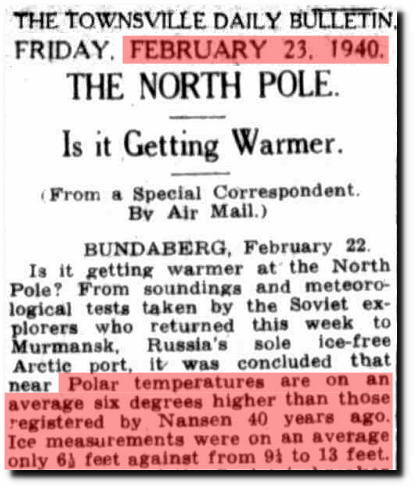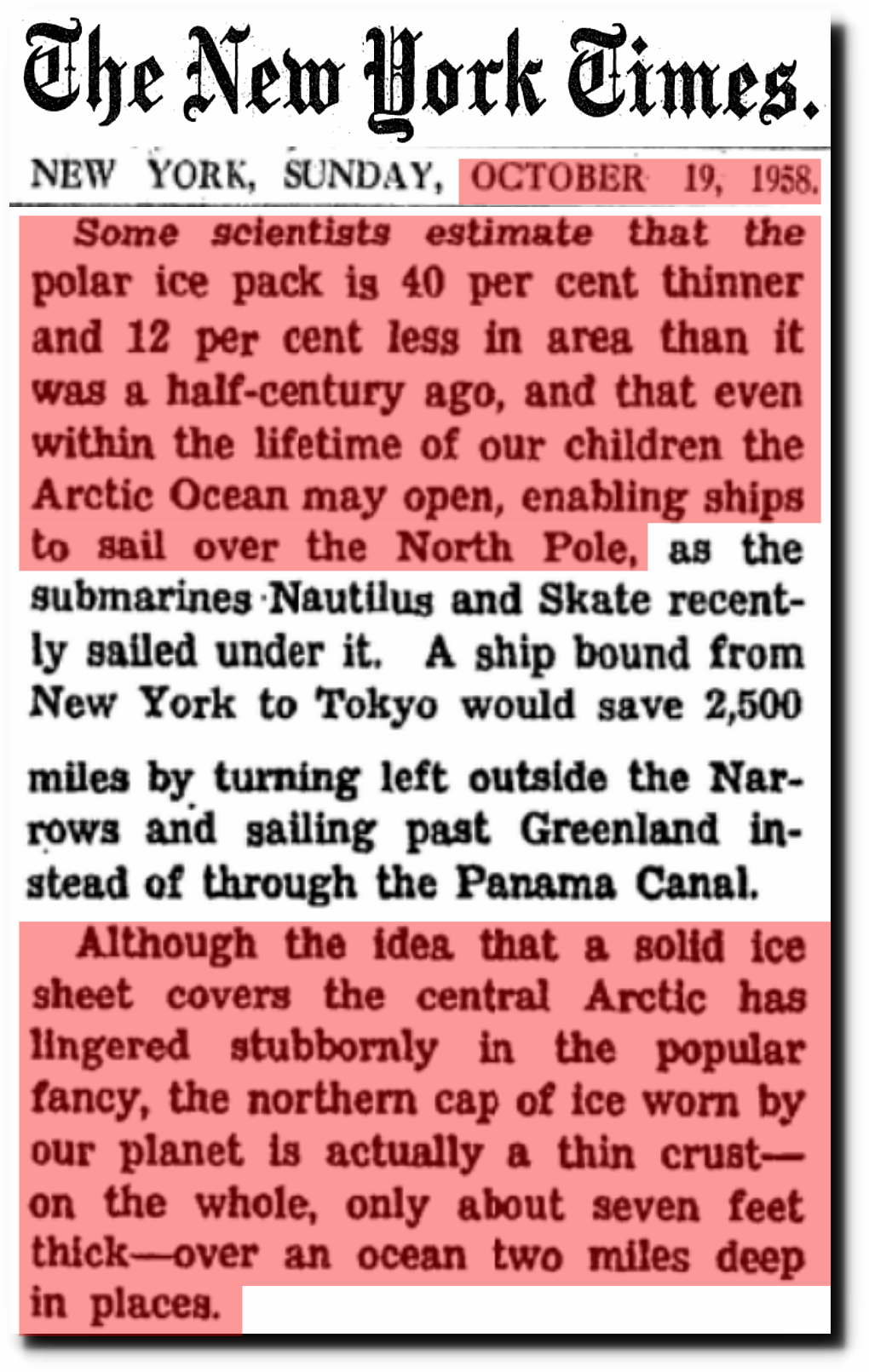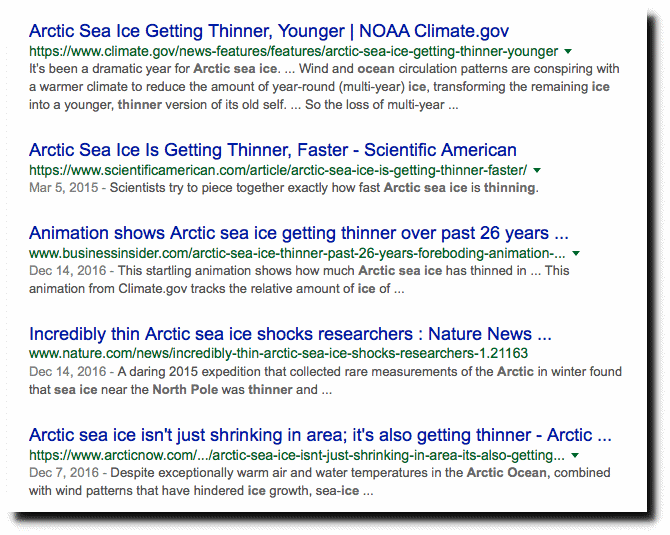The Danish Meteorological Institute reports that Arctic sea ice is about two meters thick.
In 1940, Arctic sea ice was also about two meters thick.
In 1958, the New York Times reported that Arctic ice was about two meters thick, and that people carry a popular misconception that the ice is much thicker than it is. They also predicted an ice-free Arctic within one generation.
The Changing Face of the Arctic; The Changing Face of the Arctic – The New York Times
Arctic sea ice is about the same thickness as 75 years ago, but because people are constantly being lied to about climate by government scientists, they carry the same misconceptions which people had 60 years ago.





